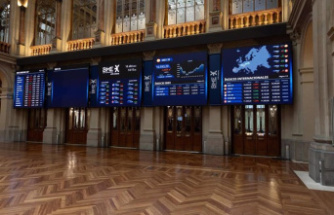If supply is interrupted in the Strait of Hormuz, located between the Gulf of Oman and the Persian Gulf, "it could pierce the level of 120 to 150 dollars"
SEVILLA, 20 Oct. (EUROPA PRESS) -
The price of a barrel of Brent oil will fluctuate between 85 and 95 dollars in the short term, specifically until the end of the year, although it will be subject to "high volatility that could cause specific departures from this range." These forecasts are due to the possible involvement of Iran in the conflict between Israel and Palestine, to which are added the future movements that OPEC and Saudi Arabia may take in reaction to this event and the continuous readjustments in the United States economy. as pointed out by experts from the energy consulting firm Tempos Energía.
For the general director of Tempos Energía, Antonio Aceituno, "the recent attack by the Palestinian Islamist group Hamas on Israel represents one of the most important geopolitical risks for the crude oil market since the war in Ukraine."
Unlike Russia, "Israel has very modest energy production, but in this case there is a risk that the war will spread to the main energy producers in the Middle East and could affect oil and gas flows, which represent a third and fifth of world trade," he stressed.
However, the expert explained that "the market reaction has been modest, with the new price of crude oil being below the recent maximum of $97.69 per barrel." "An increase that also finds one of its causes in the measure by the United States to impose the first sanctions on the owners of tankers that transport Russian oil with a cost higher than the maximum price of 60 dollars set by the G7 itself," he noted. Olive.
Likewise, the general director of Tempos Energía has added, as another reason for the modest rise in the Brent, that "gasoline consumption in the North American country continues to hover around the 2008 lows, which means that the futures are set at the level lowest since December 2022, thus causing a clear counterbalance to the rise in prices."
The energy consultancy has also placed the focus of its analysis on Iran, "whose flows are increasing and have become the second largest source of additional supply to the world maritime market this year", while its exports increased from 1.35 billion barrels per day in April to a maximum of 1.79 million in August, the highest amount reached since November 2019.
"As such, stricter US sanctions on Tehran would threaten crude oil supplies and cause a rise in energy prices both globally and domestically, something that President Joe Biden may be keen to avoid before the election. 2024," Aceituno indicated.
With all of the above, the national energy consultancy has wanted to be cautious, because, with respect to the main player in the equation, Iran, "there is no evidence, nor conclusive evidence, of its participation in the Hamas attack against Israel. , temporarily easing concerns that the United States will tighten sanctions against the country."
Furthermore, they have stated that the markets "are better equipped than with respect to other previous crises." "For example, Saudi Arabia and its OPEC allies have, taking into account the cuts they are implementing, an excess capacity of four thousand barrels per day, around 4 percent of world supply."
Along these lines, Aceituno has pointed out that "it is most likely that the hostilities will be largely confined to Gaza and Israel, which could extend to Lebanon and Syria, which will cause volatilities in prices and, at worst, In any case, a disruption in the Strait of Hormuz would be contemplated, an action that would seriously harm Iran's allies.
"If the above were to occur, Brent would have enough tools to break through the level of 120 or even 150 dollars per barrel, although the global economy would quickly begin to be damaged." "An event that would be the product of higher inflation, thus pushing the Federal Reserve towards a stricter monetary adjustment and a consequent decline in the brent below the level of 95 dollars per barrel," the expert concluded.













